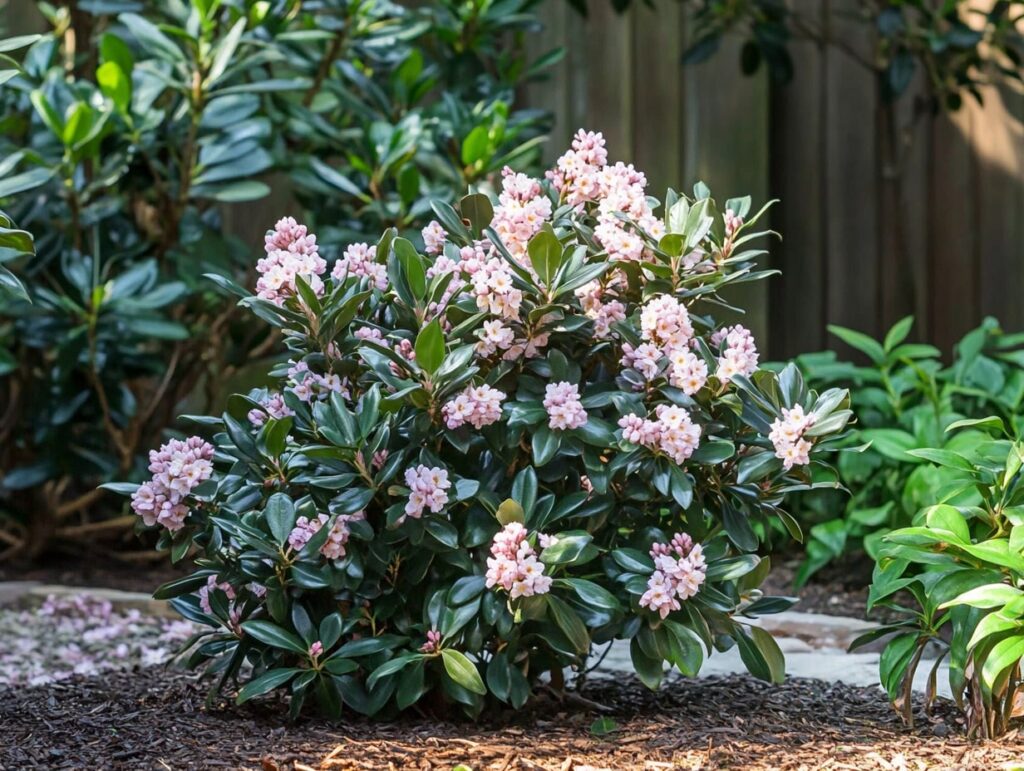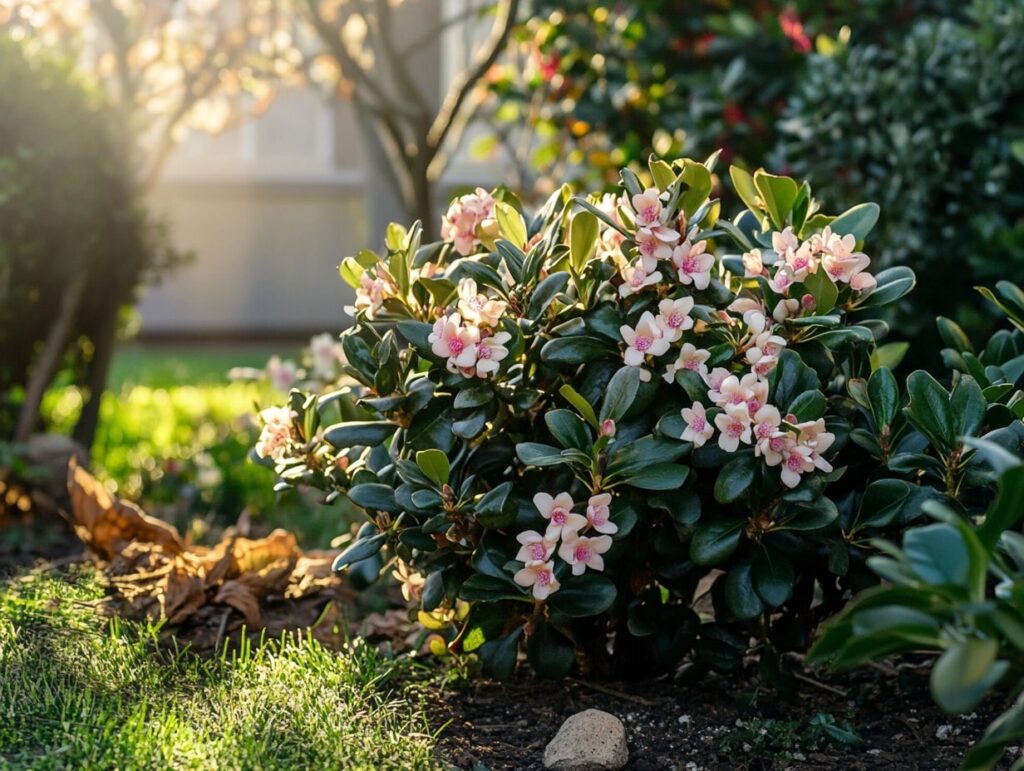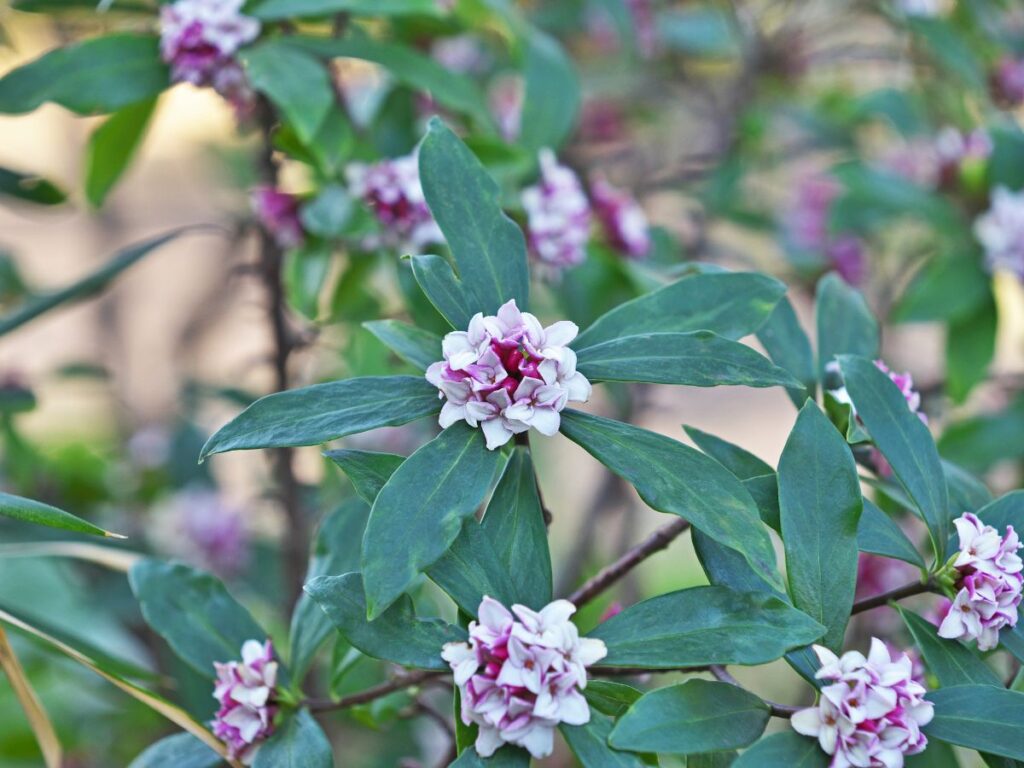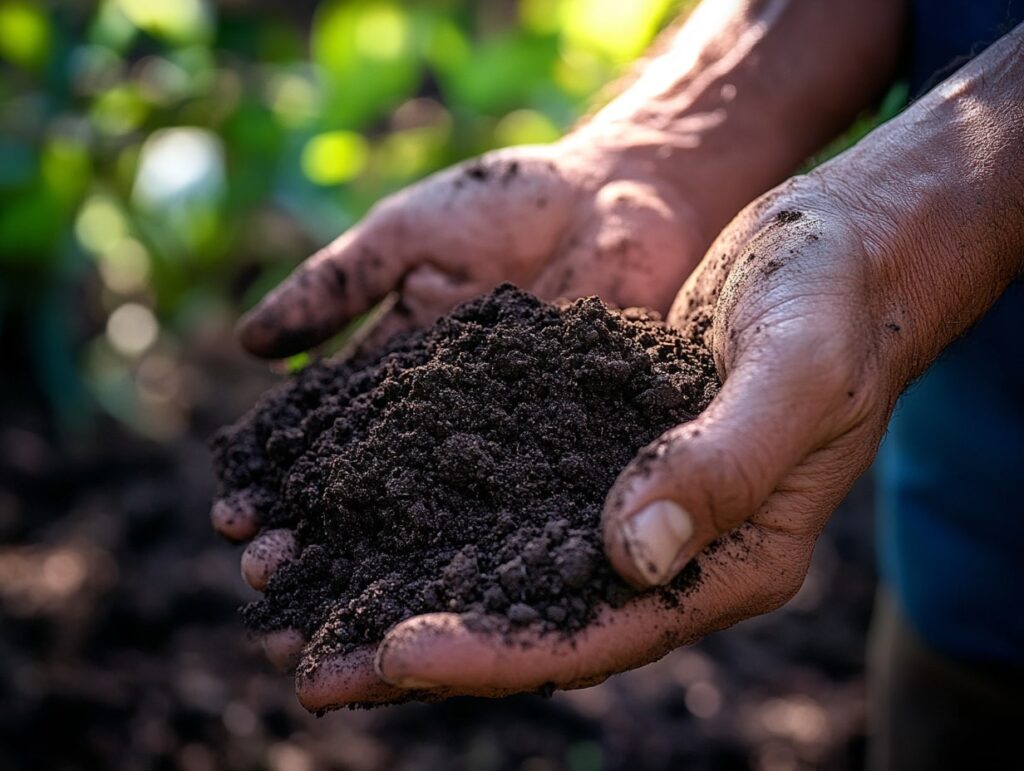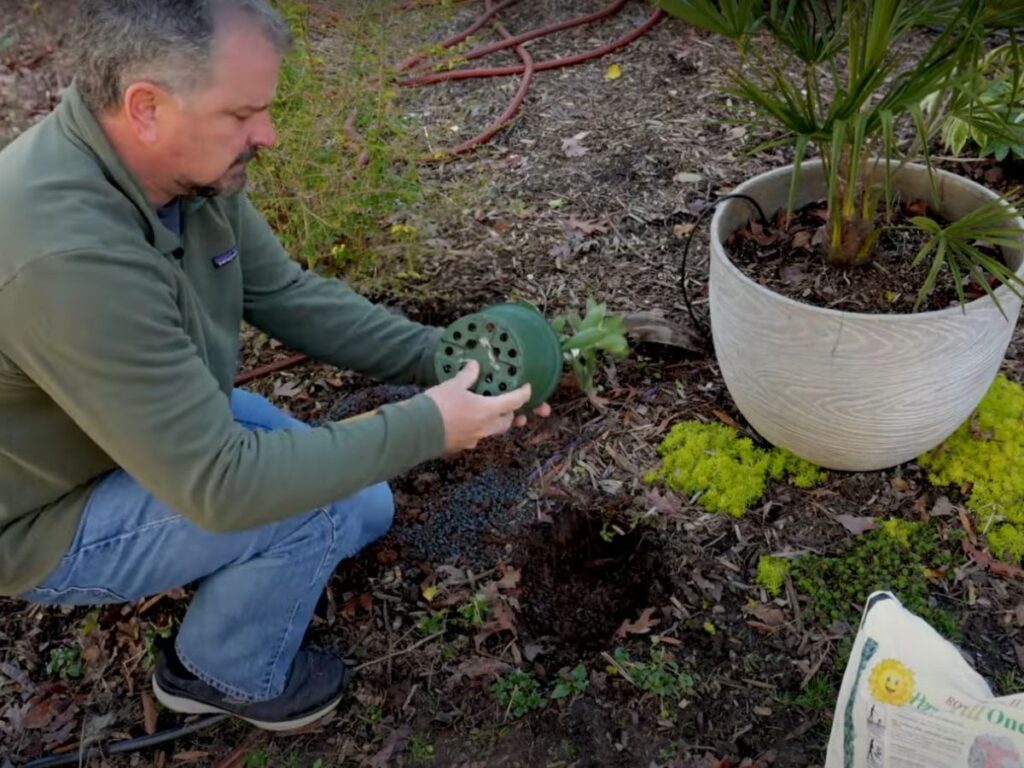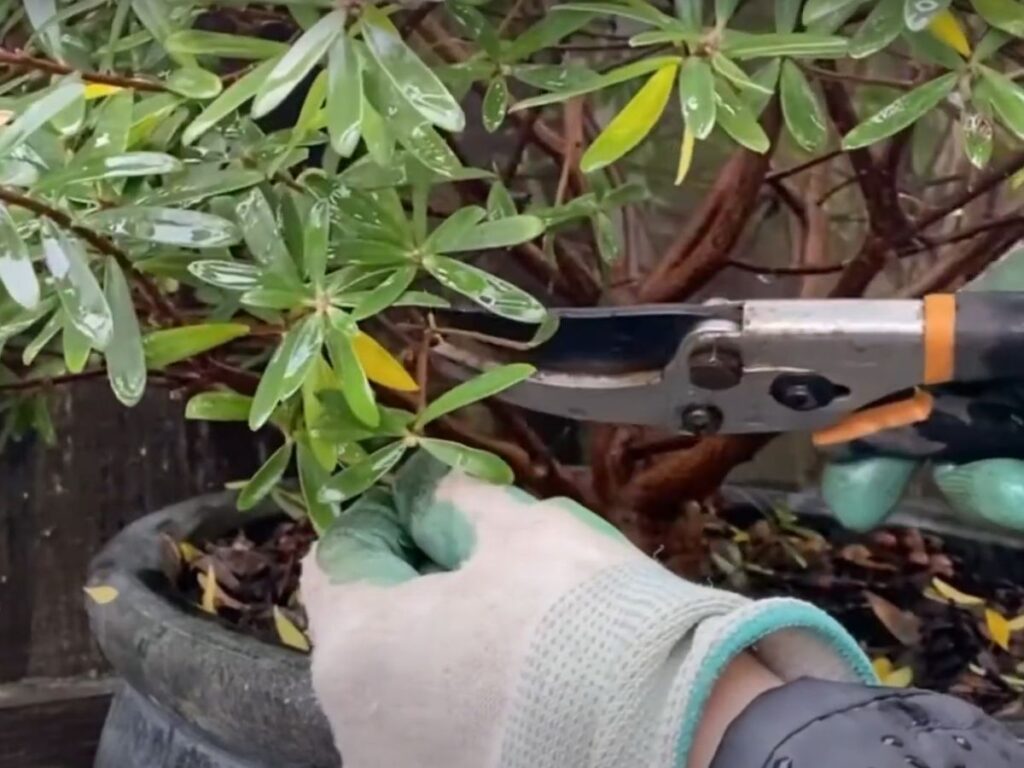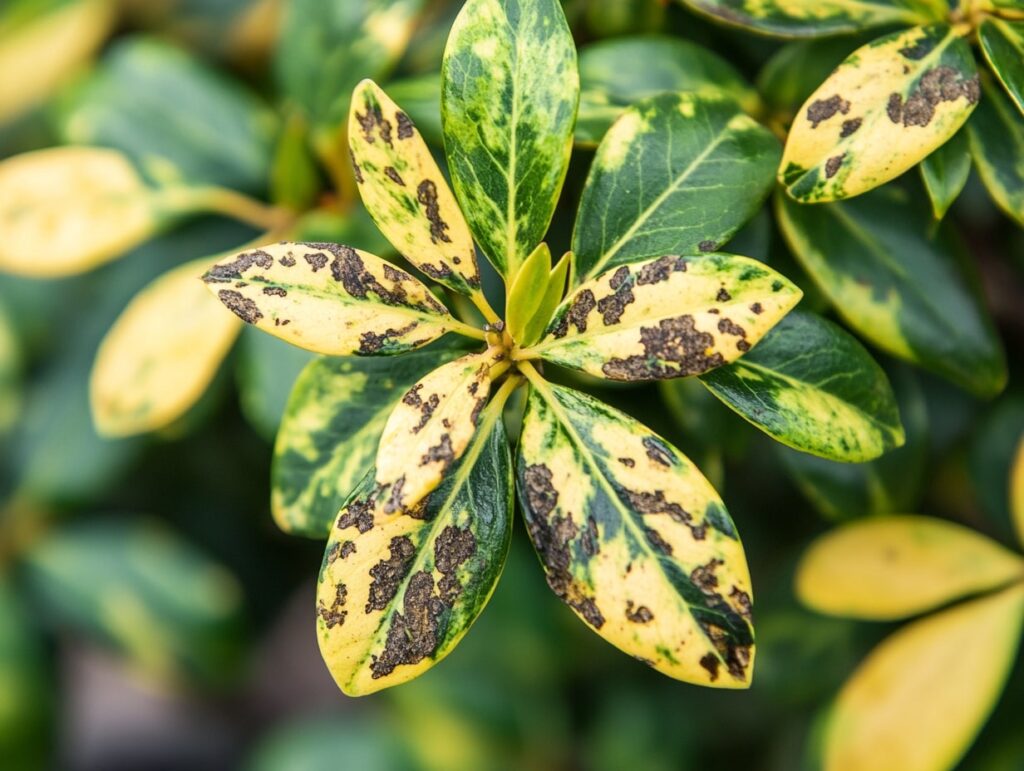Looking to add a splash of color and fragrance to your winter garden? Winter Daphne is an excellent choice that offers vibrant blooms and a delightful scent when most plants are dormant.
You’ll love Winter Daphne for its captivating aroma and beautiful pink and white flowers that brighten the colder months.
Gardening enthusiasts find Winter Daphne rewarding yet a bit tricky to grow. By understanding the conditions this plant thrives in, you can ensure it flourishes in your garden.
With the right care, your Winter Daphne can become a stunning focal point during the chilly season.
Explore the steps essential for nurturing this beautiful shrub in your yard. From selecting the perfect spot to tips on watering and soil, you’ll discover how these elements play a crucial role in the plant’s success.
Stay tuned to unravel the secrets of cultivating a thriving Winter Daphne this season.
Understanding Winter Daphne
Winter Daphne, known for its captivating fragrance and vibrant blooms, is a cherished addition to gardens. To grow this plant successfully, it’s important to know about its unique botanical traits and specific characteristics.
Botanical Profile
Winter Daphne, scientifically known as Daphne odora, belongs to the Thymelaeaceae family. This evergreen shrub is native to China and Japan. It thrives in USDA hardiness zones 7 to 9, making it suitable for milder climates.
Key Features:
- Height: Typically grows 3 to 4 feet tall.
- Width: Spreads about 3 feet wide.
- Bloom Season: Flowers in late winter to early spring.
- Flowers: Clusters of pinkish-white blooms, highly fragrant.
Understanding Winter Daphne’s botanical profile helps you appreciate its unique appeal and practical requirements in garden settings.
Plant Characteristics
Winter Daphne offers both visual appeal and a delightful fragrance. Its glossy, dark green leaves provide a stunning backdrop to the aromatic blooms. This shrub is appreciated for its compact form and requires minimal pruning.
Growing Tips:
- Soil: Prefers well-drained, slightly acidic soil.
- Light: Thrives in partial shade; protects it from harsh midday sun.
- Water: Requires moderate watering; avoid waterlogged conditions.
Winter Daphne is ideal for borders, containers, or as a focal point in small gardens. Proper care ensures its health and enhances its sensory presence in your outdoor space.
Selecting the Right Location
To ensure thriving growth of Winter Daphne, it’s essential to carefully consider both lighting and soil conditions. Positioning your plant in the optimal location influences its health and blooming success.
Lighting Requirements
Winter Daphne prefers partial shade. Aim for a location that receives morning sun and afternoon shade. Too much direct sunlight can stress the plant, leading to scorched leaves. Consider placing it under a tree canopy or near taller shrubs.
If you’re planting near a structure, avoid spots where reflective heat might become an issue. Indoors, choose a bright, indirect light area. Inadequate lighting can hinder blooming, so ensure it gets just the right exposure for vibrant growth.
Soil Preferences
The soil for Winter Daphne should be well-draining and slightly acidic. Aim for a pH level between 5.5 and 6.5. Use a mixture of loamy soil with organic matter, such as compost or well-rotted manure, to boost fertility and improve structure.
Avoid heavy clay soils that retain water. If your garden soil is not ideal, consider planting in a raised bed or container.
Consistent moisture is important, but ensure the soil does not remain soggy. Amend soil with perlite or sand if drainage needs improvement.
Planting Your Winter Daphne
Planting Winter Daphne requires attention to timing and a careful planting process. This ensures the plant thrives and graces your garden with its fragrant blooms.
Best Planting Time
For the best results, plant Winter Daphne in the early fall. Soil warmth helps the roots establish before winter. Alternatively, spring is an option where the ground is frost-free. Both times allow the plant to acclimate before summer or winter extremes.
Consider your local climate and weather patterns, adjusting planting time accordingly. The goal is to avoid temperature extremes that can stress young plants.
Plant when daytime temperatures are mild, and the soil is moist but well-draining. Avoid planting during drought or excessive rain.
Step-by-Step Planting Process
Begin by selecting a well-draining location with partial shade. Full sun can be too harsh, while deep shade hinders blooming. Prior to planting, amend the soil with organic matter to enhance drainage and fertility.
Dig a hole twice the width but the same depth as the root ball. Gently remove the plant from its container, loosen the roots, and place it in the center of the hole. Backfill with soil and firm it gently. Ensure the top of the root ball is level with the ground.
Water thoroughly to settle the soil, providing deep and even moisture. Maintain consistent watering in the first year to help the plant establish strong roots. Adding mulch around the base helps retain moisture and suppress weeds.
Caring for Your Plant
Ensuring your Winter Daphne thrives involves proper watering, fertilizing, and pruning practices. Each of these factors plays a crucial role in maintaining a healthy and vibrant plant.
Watering Schedule
Winter Daphne prefers well-drained soil that is consistently moist. Avoid letting the soil dry out completely or become waterlogged.
Once or twice a week watering is usually sufficient. During the hotter months, you may need to increase frequency, particularly if the plant is in a sunny spot.
Use a soaker hose or drip irrigation to provide a deep and thorough soaking. Mulching around the base with organic matter helps retain moisture.
Regularly check the soil by inserting your finger about an inch below the surface. If it feels dry, it’s time to water again.
Fertilization Tips
Feeding your Winter Daphne is important, especially during the growing season. Apply a balanced, slow-release fertilizer in early spring as growth begins. Avoid high-nitrogen fertilizers, as they can damage the plant’s roots.
A fertilizer with an N-P-K ratio of 10-10-10 or similar works well. Too much fertilizer can lead to poor flowering and leaf burn, so adhere to package instructions.
Incorporate compost into the soil annually to improve nutrients and texture. A light top-dressing of compost in autumn can also be beneficial.
Pruning Techniques
Prune Winter Daphne cautiously to maintain its shape and health. The best time to prune is right after it finishes flowering, typically in late winter or early spring. Remove dead or damaged branches first and make your cuts at a slight angle.
Thin out crowded branches to improve air circulation and reduce disease risk. Minimal pruning is key, as over-pruning can stress the plant.
Focus on removing any crossing branches or unwanted growth that disrupts its natural form. Always use sharp, clean tools to prevent damage or infection.
Troubleshooting Common Issues
Winter Daphne is a beautiful plant, but it can face several challenges. Key areas to focus on include managing pests that threaten the plant and preventing diseases that could affect its overall health.
Pest Management
Winter Daphne can be vulnerable to pests such as aphids, spider mites, and scale insects. Aphids cluster on new growth, causing leaf curl and stunted development.
Regularly check the undersides of leaves and use insecticidal soap if necessary. Spider mites create tiny webs and yellow spots on leaves. Increase humidity around the plant or apply miticides to control them.
Scale insects are another concern, forming hard shells on stems. Remove manually with a cloth soaked in soapy water.
Natural predators like ladybugs can also help maintain a healthy balance. Monitoring your plant and promoting beneficial insects can greatly reduce pest-related problems.
Disease Prevention
Diseases in Winter Daphne often arise from overwatering or poor soil drainage. Root rot is a severe issue caused by excess moisture around roots. Ensure pots have drainage holes and water the plant only when the topsoil feels dry to the touch.
Foliage diseases, like leaf spot, are marked by brown spots on leaves. If visible, trim affected leaves and dispose of them far from your garden. Apply fungicides sparingly to prevent further spread.
Providing adequate air circulation and avoiding wetting the foliage directly can also prevent disease outbreaks. Always aim for a balance between moist soil and dry air around the foliage.
The Reward of Perseverance
In a world obsessed with instant gratification, tending to a plant like Winter Daphne is a refreshing departure. It asks you to slow down, to pay attention, and to find joy in the gradual process of growth.
When, in the heart of winter, your garden fills with the sweet scent of its blossoms, you’ll understand that the journey was worth every moment.
Winter Daphne doesn’t just survive the cold, it thrives, reminding us all of the resilience and quiet strength inherent in nature.



